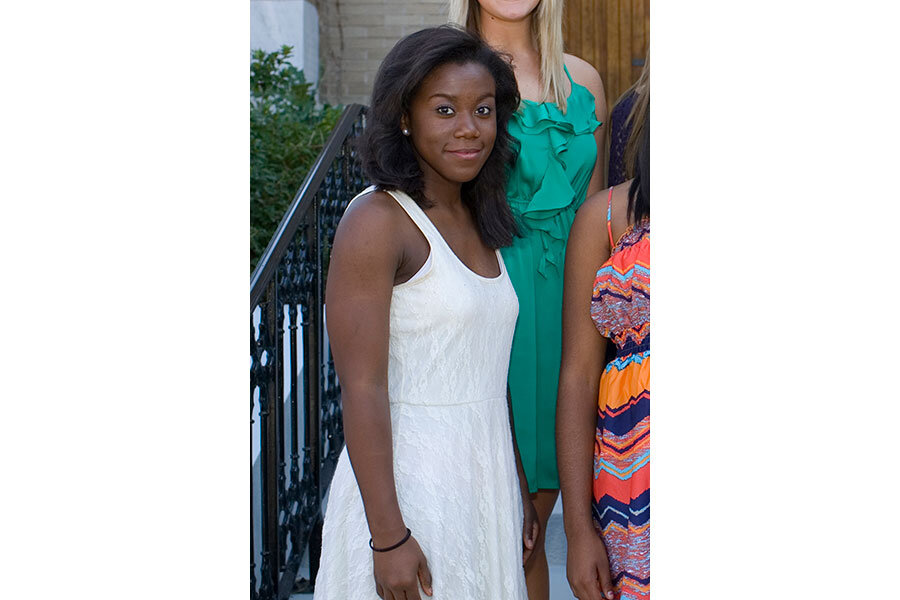What if ISIS were run by women? In Mississippi, a glimpse.
Loading...
On the surface, the arrest of a young Mississippi couple at an airport last year, as they were on their way to join the Islamic State in Syria, looks no different than numerous other cases of Western men and women caught trying to join the terrorist group in recent years.
But the couple’s farewell letters revealed an unusual role reversal. Jaelyn Young acknowledged that she was "the planner of the expedition and that [her fiancé] was going as her companion of his own free will," according to court documents.
Ms. Young and her fiancé, Muhammad Dakhlalla, were arrested Aug. 8 trying to board a plane from Columbus, Miss., to Istanbul. This week, both pleaded guilty to charges of conspiring to support a terrorist organization.
Typically, the Western women who have joined the Islamic State, also known as ISIS, have been recruited to Syria as wives and social media propagandists. But Ms. Young’s story hints at a uniquely Western wrinkle. Away from the strict gender norms of the Islamic State homeland, women have occasionally taken the role as leaders.
The most obvious example is Tashfeen Malik, who appeared to be the driving force behind the San Bernardino, Calif., shootings last year. In Mississippi, Young has been portrayed as the catalyst for the potential move to Syria, and in New York, two women were arrested last year for plotting to bomb police or military targets.
Female terrorists, of course, are nothing new, whether as member of the Baader-Meinhof gang in the 1970s or as “black widow” suicide bombers in Russia. But experts say their roles in terrorist organizations tend to correspond with their role in society. For a radical Islamist group like ISIS, “women will rarely be accepted in leadership positions,” writes Erik Kleinsmith , a terrorism expert at the American Military University, on the InHomelandSecurity blog.
“An exception to this,” he adds, “would be in isolated or self-radicalized cells that would then pattern the particular host society, such as one in a more Western country.”
With ISIS outsourcing its terror operations in the West, women like Young can take a more active role.
In general, ISIS has taken a much more active line toward recruiting women than radical Islamist movements of the past.
Of 604 militants from 26 Western countries who, according to credible reports, left their home countries to join terrorist organizations in Iraq and Syria, 1 in 7 were women, according to a report by New America, a nonpartisan think tank in Washington.
"An unprecedented number of the militant recruits are female," the group wrote. "This is quite different from Western militants who fought in Afghanistan in the 1980s or Bosnia in the 1990s.... Women were rarely if at all represented among militants in previous jihadist conflicts."
About 10 percent of the 250 Americans who had attempted to travel to Syria were women, the Monitor's Warren Richey reported in October.
ISIS recruiters "say, 'Come'…. They want women for the fighters there," says Brigitte Nacos, a political scientist at Columbia University who studies terrorism.
While the New America report classifies the women as "militants," they don't do much fighting when they get to Syria or Iraq.
"Women don't really fight in ISIS – they more to some extent engage in social media recruiting, [or] go be wives of ISIS fighters," says David Sternman, a senior program associate at New America and co-author of the report.
Young is an outlier in this respect. Prosecutors have portrayed her as the leader of the plot to escape with Mr. Dakhlalla, saying she was already interested in converting to Islam when they began dating in November 2014.
This is more strikingly true of Ms. Malik, who helped her husband, Syed Rizwan Farook, carry out the San Bernardino attack in December. Both had become radicalized before they met, according to reports.
Last April, Asia Siddiqui and Noelle Velentzas of New York were arrested after talking to a Federal Bureau Investigation informant about building bombs. Ms. Velentzas told the undercover agent “that she did not understand why people were traveling overseas to wage jihad when there were more opportunities of ‘pleasing Allah’ here in the United States,” according to an FBI affidavit filed in the case.
The group's appeal to young Muslim women to turn their backs on the West for a more "authentic" life, together with indiscriminate calls to either join the group or carry out attacks in the West could lead to more such cases, experts say.
While the Islamic State stresses that women should only fight in emergency situations, women in the West can write their own rules, says Mr. Sterman. The group "does not really have the level of control over these completely inspired attacks to select who does, or does not, conduct them.”








